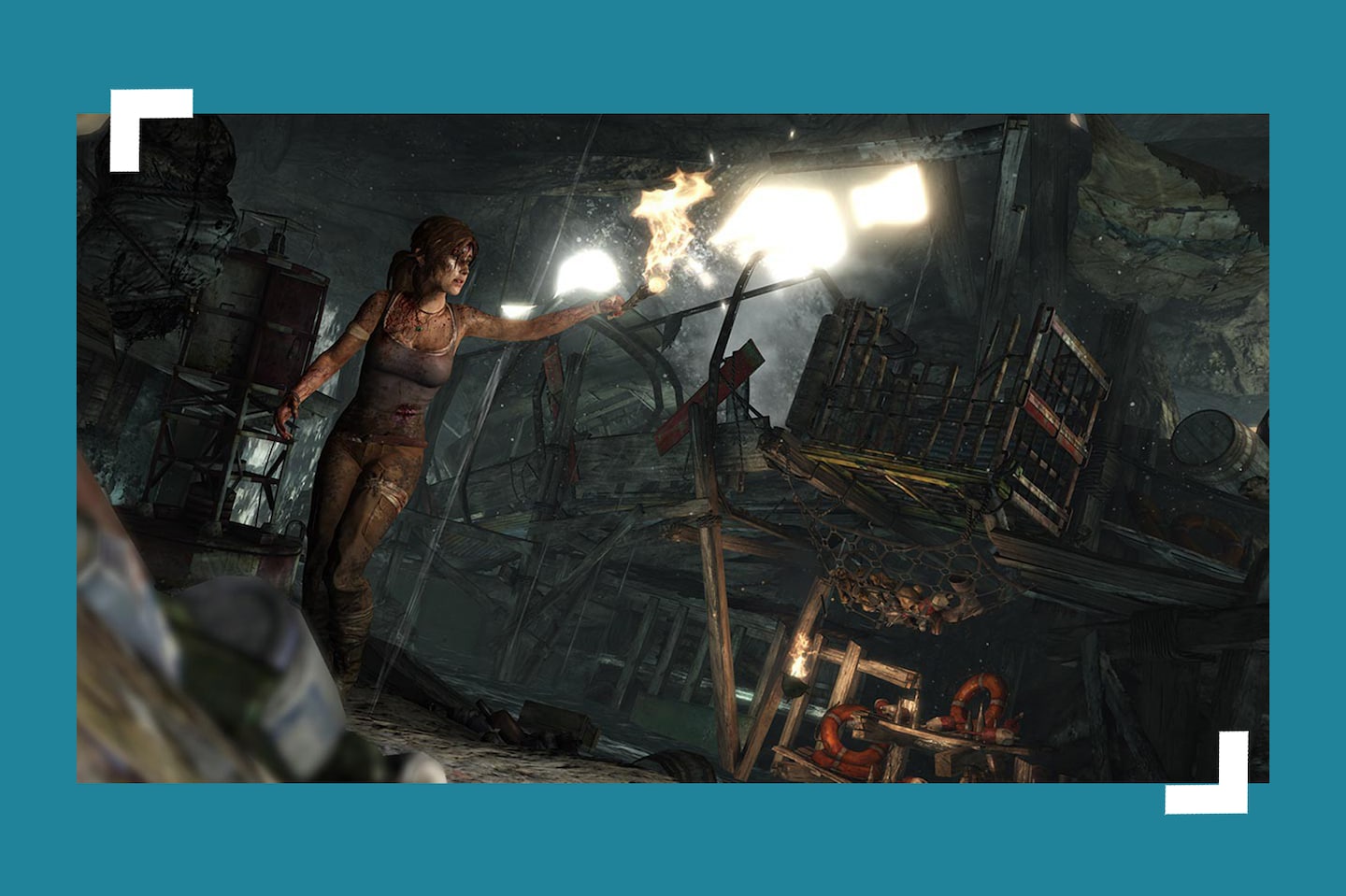Today’s announcement of a new Tomb Raider game is exciting news, signaling the welcome return of an icon among video game protagonists.
Tomb Raider is back. Let Lara Croft enjoy raiding tombs again.

Contrast this with the classic depiction of Lara Croft by original developer Core Design: She was an explorer who would proudly display her accomplishments and victories in an elaborate training facility within her huge mansion. She reveled in her trophies. While her father was still a famous explorer, it was a legacy she was not only proud to continue, but it was one she ravenously built upon. And she loved every minute of it.
That depiction of Croft was so successful, it translated to one of gaming’s first mainstream crossover successes. Croft became an “It Girl” of the 1990s, appearing on the covers of men’s magazines, and catapulting Angelina Jolie into the role of a versatile action lead in Hollywood with a successful line of feature films. In 1998, British politicians nominated her to be an ambassador for science excellence.
The modern iteration of Lara Croft didn’t seem to want any of this. Even after three games, she would insist she had little agency in her adventures. By the end of the third game, she still seemed completely flustered, unsure of why she was doing what she did.
This was disappointing, especially considering the growth she was supposed to have undergone by the end of the first adventure in 2013. In that game, as a teenager thrust into danger, she is traumatized when she kills someone in self-defense. It’s a beautifully raw moment of vulnerability; she keels over to vomit once she begins to process what she’s done. That vulnerability became a thrilling, empowering arc in that game. Hours later, as Lara piled up the bodies and the mercenaries she was up against began to recognize her as a threat, they would scream in fear: “She’s only one woman!”
Grenade launcher in hand, Lara Croft bellowed back, “That’s right. Run you bastards! I’m coming for you all!”
What an empowering moment. The player would still be in control of Lara as she yelled that line, and the natural gameplay instinct would be to start hurling grenades in the direction of her foes. It was the perfect merging of narrative and player intent, a rare feat in game storytelling.
Some important context might be helpful. Lara Croft’s modern depiction wasn’t just informed by the trend of making fantastical action heroes “realistic.” It also came in the midst of a period when video game storytellers felt obligated to address the criticism of ludonarrative dissonance in video games. This line of critique highlighted the gap between gameplay and narrative, pointing out that the heroism of video game protagonists hardly matched the player experience of murdering hundreds of digital puppets. This created dissonance between the player’s aggressive actions and the narrative protagonist’s otherwise normal interactions with people — despite having ended more lives than most serial killers.
Unfortunately, games of that era often failed to address anything at all. Instead, they spawned a slew of mealy-mouthed, wishy-washy hypocrite protagonists who would vocalize their concerns about murder but keep doing it anyway. That Lara Croft seemed to enjoy the killing by the end of 2013′s “Tomb Raider” felt like a brave step forward by Crystal Dynamics.
Unfortunately, in the follow up, “Rise of the Tomb Raider,” Lara Croft almost immediate reverts back to her status at the start of the trilogy: She doesn’t really want to raid tombs. She is depicted as suffering from post-traumatic stress disorder. Still, predictably, she goes on yet another tomb-raiding adventure. That cycle repeats again in the last game of the trilogy, “Shadow of the Tomb Raider,” where she’s not raiding tombs because she likes it, but because she feels obligated to stop the paramilitary organization that discredited her father and is now threatening an apocalypse. By the end of that game, series publisher Square Enix had told the same origin story three times.
There are, of course, valid and important points to be made about the legacies of archaeology and British and U.S. colonization, as well as the exploitation of culture for personal profit and glory. But here’s my counterpoint: Video games, particularly big-budget games, are bad at confronting these themes. Even Marvel’s “Black Panther,” which halfheartedly addressed this via its villain character Killmonger, couldn’t be bothered with that narrative thread for too long. Lara Croft is a pop icon, and it would take a miracle (or exceptionally talented and committed writing and storytelling) to depict a Lara Croft who’s able to grasp and address colonialism. If such a topic is to be addressed, it’s probably best left to a series of stories not called “Tomb Raider.”
At the newest trilogy’s conclusion, Croft tells a friend, finally, that she “can’t wait” to meet whatever adventures are in store. It’s a hopeful note, not just for Lara, but for players who were exhausted with her breathless exasperation. So yes, it’s welcome news that Lara Croft is back. Let’s hope, this time, she actually wants to come back.






